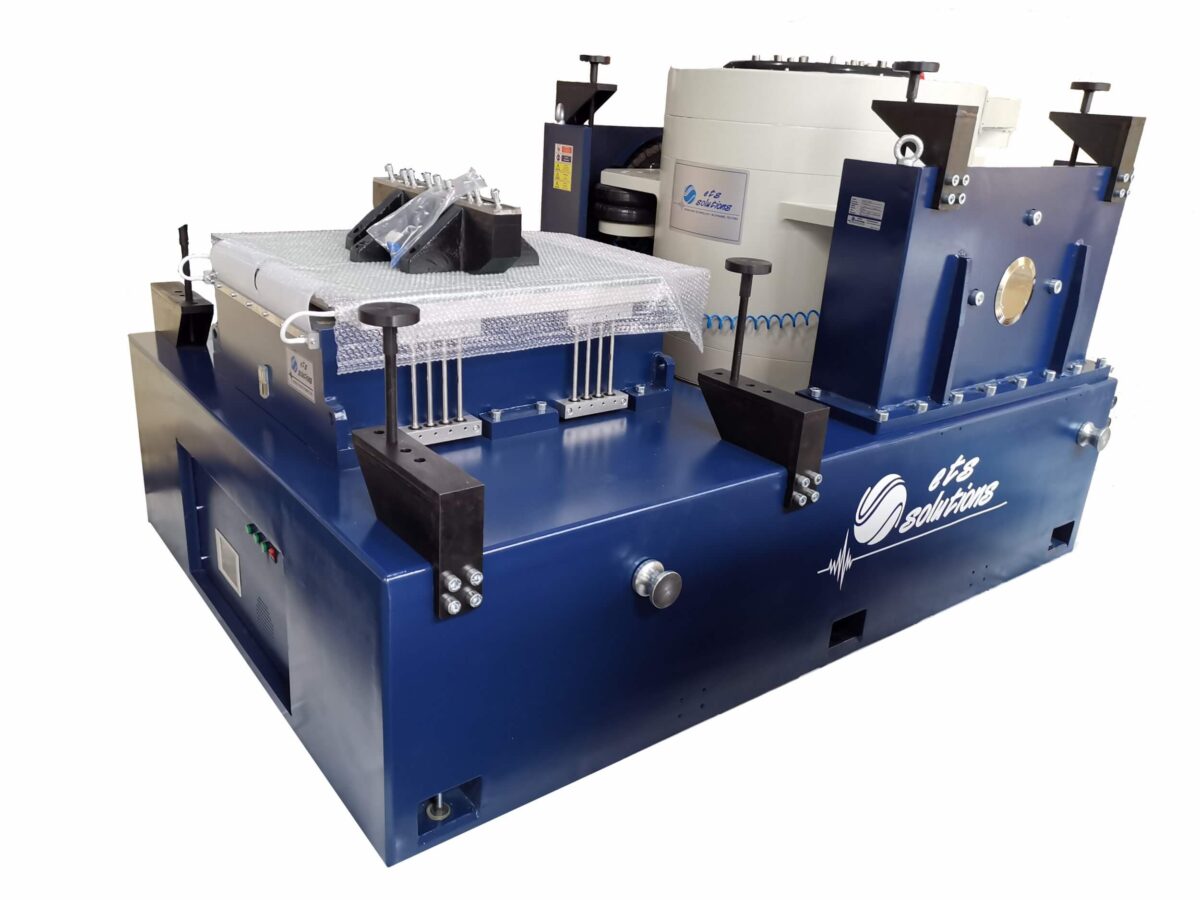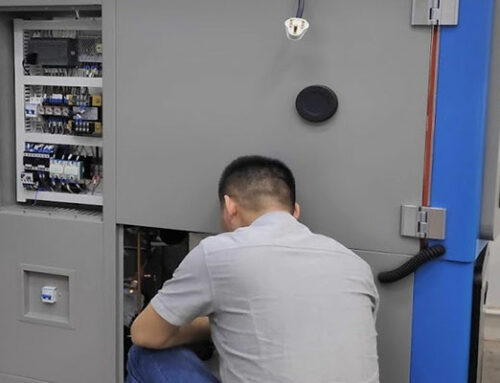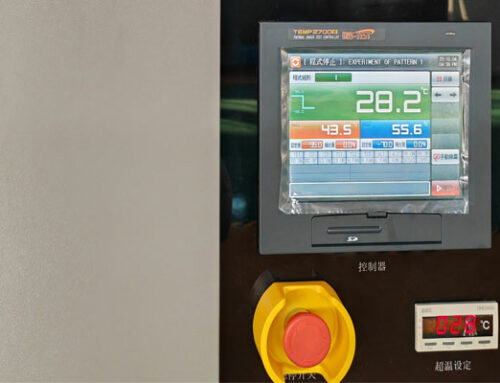Most vibrations in the real world are random. For example, a vehicle traveling on a road is subject to random vibrations due to road irregularities. Ground-launched rockets experience erratic vibrations during flight—the engine ignites, the rocket passes through the atmosphere, the engine burns out, and so on. Even airfoils, when subjected to turbulent airflow, experience random vibratory responses.
For these reasons, any vibration testing protocol must accurately reproduce the diversity of forces that your product will experience over the course of its service life. By performing vibration testing on your product, you can identify weak points and other design issues. Among the many items that typically require random vibration testing are motorcycle components, jet engines, cruise missiles, catalytic converters, and anything that needs to be transported. In this article, we will cover everything about vibration testing.
(Another Related Article: How do Mechanical Vibrations Occur?)
1. What is a vibration test
A vibration test involves applying mechanical motion to a component, product, system, or structure to observe the response or degradation over time. Some vibrations are expected and even necessary for the product to function as intended. However, not all objects vibrate in beneficial or even intentional ways.
Vibration testing is designed to simulate the actual vibration expected in a typical or worst-case application, this allows for checking the stability of the structure and the reliability of the connections between components. It is used to check the stability and anchoring force of various products in various industries and applications. They can both improve your product’s comfort (for example, by helping to eliminate unpleasant noises such as squeaks) and extend the life of your product.
At the same time, the manufacturer’s vibration test of the product is a responsible attitude to the customer. One of my friends whose factory makes smart locks. Before shipping, he performs performance tests, including vibration tests.
(Another Related Article: Drop Testing 101: An Ultimate Guide)
2. Vibration Test vs Impact Test: What’s the difference?
Despite the overlap between the two definitions, vibration testing differs from mechanical shock testing because vibration testing is applied over a longer period of time, ranging from minutes to weeks. The duration of a mechanical shock test is usually less than one second per shock, but often multiple shocks are performed over an extended period of time.
1) Common vibration tests
- Sinusoidal vibration
- Random vibration
- Sine of random vibration
- Combined temperature and vibration test
- Accelerated Life Testing (HALT)
- ESS vibration test
- SRS (Shock Response Spectrum) Analysis
2) Common impact test
- Repeated impact test
- Half-sine shock pulse
- Sawtooth shock pulse
(Another Related Article: Shock vs Vibration: What’s the Difference?)
3. Types of vibration testing procedures
There are several vibration testing programs to choose from, each with unique features and benefits. While they all have similarities, the main differentiating factor is the type of stimulus each method produces. The pattern, cadence, and dwell time of your vibration test program help determine which method is best for you to replicate real-world conditions and ensure the quality of your products.
1) Sinusoidal vibration
This is the simplest vibration testing procedure, the sinusoidal vibration test uses a simple simple harmonic vibration input to the test sample, followed by a single sinusoidal tone. The sine tone can be swept across the entire test frequency range or fixed at a single frequency as desired.
Sine tests excite the natural structural (resonant) vibration frequencies of the test specimen. To focus on natural frequencies, you can selectively vary the test frequency. Swept sine testing using lower acceleration levels is often used to perform a resonance search (vibration response study) to identify the resonant frequencies present in the test sample.
In addition to identifying natural frequencies, swept sinusoidal vibrations can be used to evaluate the durability of a test specimen over successive frequency sweep cycles; the sweep covers the entire test frequency range, and the oscillations at each frequency are accumulated during the test.
2) Broadband Random
In contrast, the Random Vibration Program covers vibrations of a random nature caused by transportation or operating environments such as aircraft, spacecraft, and land vehicles. Random vibrations replicate an unpredictable and non-repetitive environment.
For testing, these methods use uniquely generated patterns rather than sinusoidal methods that rely on a steady frequency. Random vibration testing protocols combined with custom vibration profiles are powerful tools for your product qualification and validation.
3) Compound vibration
For some projects, more than one type of vibration testing protocol is used to meet unique requirements, ensure accurate test conditions, or create accelerated procedures. Create composite standards by combining multiple vibration methods.
While there are literally countless unique methods of compounding vibrations, the most popular are sine plus random and random plus random.
4) Comprehensive environmental testing program
Because environmental factors such as temperature, humidity, and altitude can exacerbate the effects of vibration on your product, we sometimes use a combination of environmental and vibration test procedures to create a realistic test environment.
Combined environmental procedures popular among test procedures such as MIL-STD-810, RTCA DO-160, and DEF STAN 00-35 provide more robust verification procedures that allow for real-world variables that affect product performance.
(Another Related Article: Interpretation of the ISTA test standard)
4. Application of Vibration Testing
Below are some example application areas of vibration testing that we have compiled.
1) Car
Vibrations induced by the road surface are very important to a car (and its occupants). In testing, they are typically simulated with random vibration profiles, including slippery road surfaces as well as potholes, thresholds, and even behavior during braking. Opening and closing the doors and hood should also be included.
2) Aerospace
Aircraft must meet particularly stringent requirements because they may be subject to particularly harsh conditions and the safety and even lives of occupants may depend on their reliability. Vibrations mainly occur during takeoff and landing and during weather-related turbulence. Even stronger vibrational stresses are encountered during space travel.
Especially during the rocket launch phase, the load on the system and components can be as high as 20 G for about two minutes. Also during object re-entry and eventual landing, the vibration loads are very high. In both cases, a mixed-mode testing program is appropriate.
3) Consumer product vibration test
Consumer products are also often subjected to vibrations in daily life, which can be tested to simulate vibrations to improve the resistance and service life of your products. Kitchen appliances and furniture are just one of them. Additionally, many products must undergo vibration testing in order to be certified (e.g. CE). Last but not least, the transport route from manufacturer to distributor and finally to consumer contains many sources of vibration. To ensure safety here, package testing is necessary.
4) Military vibration test
Especially for military equipment, which is often subjected to high vibration stress, demanding tests must be carried out and our laboratory is specially equipped for this purpose. Here, according to military standards, we are almost always talking about mixed-mode test execution.
(Another Related Article: Altitude Test 101: An Ultimate Guide)
6. Vibration test standard
The fact that all products are subject to some degree of vibration in everyday use has led to the development of vibration testing standards that certain industries must follow. Below is a brief selection of some of the most recognized vibration testing standards and guidelines:
- AC 156 Earthquake: For manufacturers of equipment used in areas prone to earthquakes, seismic testing verifies that their products can withstand a certain amount of seismic energy.
- ASTM Standards: The American Society for Testing and Materials (ASTM) International publishes a series of standards related to vibration levels as they relate to the manufacture and transportation of commodities such as biomedical equipment, military equipment, aerospace landing gear, and automotive parts.
- ISTA Methods: The International Safe Transit Association publishes a variety of test methods designed to ensure that shipping stresses, including vibration, do not adversely affect the safety of equipment used in the industry.
- ISO Directives: The International Organization for Standardization has issued several directives, including Directive 10816, which specifies requirements for vibration testing, and Directive 18436-2, which allows qualified personnel to obtain certification for vibration condition monitoring.
- MIL-STD-202: Published by the Department of Defense, MIL-STD-202 addresses the quality of electrical and electronic components supplied by contractors to the military, including the ability of the product to withstand a certain level of vibration.
- MIL-STD-810: This military standard specifies rigorous testing methods, including vibration testing, to simulate the harsh environmental conditions under which products and equipment will operate in the field.
(Another Related Article: ASTM Test 101: A Full Guide)
7. Recommend Vibration Test System
Vibrate the test object with the aid of a vibrator. A vibrator usually consists of a platform on which an object is supported. Vibrations can be imparted to objects in two ways, including “random” vibrations (simultaneously involving different frequencies) or “sinusoidal” vibrations (showing a continuous, frequency-wise progression (increase/decrease curve)).
The term “random vibration test” is different from the term “sinusoidal vibration test”.
A “random vibration test” is usually a more realistic description of the conditions under which your product will actually be used. A product usually has multiple resonant frequencies. Random testing at multiple simultaneous frequencies can quickly provide analysis leading to statements about service life and repair susceptibility. In a sinusoidal vibration test, run the frequency spectrum. A sine sweep can be used to determine the frequency at which the product responds most.
Both test methods can also be combined to form a “mixed mode vibration test”. Here, stochastic oscillations are merged with the resonance dwell time of the sinusoidal test.
Not all test samples require the same level of vibration and stress, so not all shakers are created equal. In general, shaking table testing can be classified according to the mechanism driving the vibrations in a given type of shaking table.
Depending on the type of vibration testing instrument used, shaking table testing falls into three main categories:
- Mechanical Shakers: Mechanical shakers are extremely reliable when it comes to cost-effective vibration testing. However, due to their limited speed and vibration range, mechanical shakers are not always able to meet the testing requirements of heavy-duty test products.
- Electro-hydraulic shakers: In electro-hydraulic shakers, hydraulically controlled shakers are activated by electricity. For products that require more robust testing, this type of shaker testing is more expensive than mechanical shaker testing, but it can generate a wider range of vibrations.
- Electromagnetic Vibrators: To generate some of the highest levels of vibrational stress (for example, for products in the aerospace industry), electromagnetic vibrators are capable of fine-tuning while producing vibration rates beyond what any other type of vibrator can produce. They are the most expensive of the three types of shaker tests.
(Another Related Product: Vibration Test Machine)
8. Conclusion
For vibration testing to be effective, you must always know and control the exact frequency and amplitude of the vibrations the DUT will be exposed to, and whether they are sinusoidal or not. Vibrate randomly. The sample must first be securely fixed to the shaker table via standard spring-actuated clamps.
In many cases, for highly complex test pieces, the sample is firmly fixed to the shaker table by a custom-made test fixture. We have extensive experience in manufacturing these fixtures to meet our customers’ specific testing needs.
Your selection of the correct vibration testing protocol can help ensure the quality and safety of your product by ensuring that the product can safely withstand the vibration levels it will experience throughout its useful life.
Linkotest vibration test system is one of the reasons we have been a valued vibration testing partner to manufacturers and contractors for many years. Our engineers can evaluate your project requirements to determine the optimal test sequence to make your product market-ready.










Leave A Comment